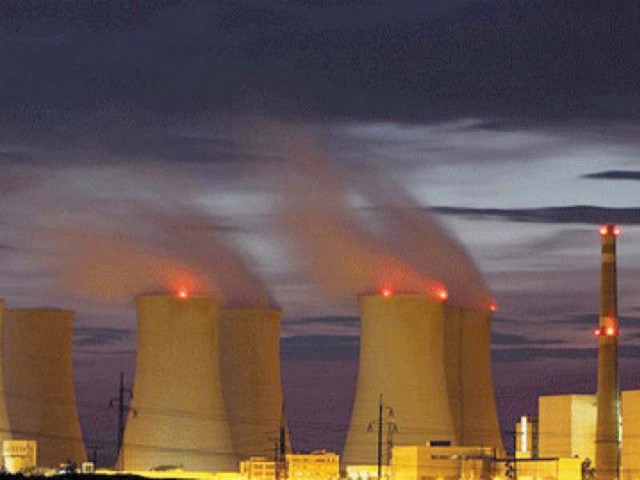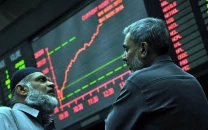Power sector: debt relief and swaps
Money is there to pay in local currency but foreign exchange is missing

Chinese power plant investors and operators have been giving various kinds of ultimatums to the government of Pakistan for releasing due payments with respect to capacity charges, fuel charges and various operating costs.
Earlier, there used to be cash shortage due to low tariff and circular debt difficulties. Now, it is due to lack of foreign exchange. Money is there to pay in local currency but foreign exchange is not there.
The main issue is that most of energy sources in Pakistan are dollar-denominated. Even if it is a local resource, its production facility has been created with foreign investment or debt which has to be serviced.
The recent example is of Thar coal which is local but its production requires fixed and variable costs which are in foreign currency. Not to talk of imported fuel power plants wherein all costs are in foreign currency; investment or debt servicing and fuel cost and other variable costs, all of it.
Most of the power plants were constructed when US dollar was around Rs100 and interest rate on foreign currency was at 5-6% and local interest rates were under 10%.
Imported fuels were cheaper as well; coal at $80/ton, LNG at $8/mmBtu, Brent crude $120/barrel or lesser, etc.
Oil increases transport cost of fuels. LNG prices until recently went three to four times high; coal was at $350/ton and LNG at $30-35/mmBtu. Now, these prices have come down to slightly above earlier averages.
A recent calamity is the hike in foreign currency interest rates; Libor has increased to 5.5% from 0.5% when most of the power plants were contracted.
Effective borrowing rates to finance capex of power plants have become around 10% (Libor + 4.5%). Thus, capacity payments have increased from 5% to 10%, almost or precisely double.
Combine it with currency depreciation, Rs100-110 to one US dollar having gone to Rs280-284, an increase of 2.7 times. In some cases, return on equity (RoE) is also Libor-based. Thus, capacity payment should have quadrupled or even more.
Older solar power plants are selling electricity at Rs30 per kilowatt-hour (kWh), while new solar tariff was 4 US cents per kWh, which should have increased to 8 cents due to increase in Libor which should translate to Rs25 per kWh.
All of this has increased producer and consumer power tariff. Under IMF conditions, circular debt has to be reduced, although in such circumstances, circular debt cannot be decreased from financial tricks or tariff increase. Increase in DISCOs efficiency with or without privatisation is the solution. Privatisation has not happened. It will take five years to privatise; more on this later.
Reducing intensity of calamity
We would deal with some of the possible solutions; debt restructuring and swap of some type or a mix of the two. Debt restructuring means reduction of interest rates or increase in repayment period.
There is a case for some adjustment with respect to interest rates as Libor has increased phenomenally and Nepra-awarded Libor margin is rather excessively high.
It used to be 3% which was increased to 4.5% due to lower prevailing Libor. Libor has gone up, thus a case for reduction of this margin suitably.
Second solution is increase in repayment period. In the power sector, debt servicing is cash based and not cost based which brings the servicing load forward.
An increase in repayment period combined with or without leasing-type constant total payment can bring down financial load.
Currently, project debt is paid in 10-12 years. If loan period is extended to 20 years, financial servicing load would be pushed forward. In case of upfront tariff projects, where investor has acquired loan, this would translate to equalisation of tariff over 20 years.
Reduction in financial servicing load would mean reduction in foreign exchange requirement as well.
Debt-equity swap
The debt which is in the form of energy tariff payables or loan is to be paid in foreign currency, US dollar mostly. In case of China, there may be possibility of payment in renminbi.
How do you buy or procure this foreign currency. Debt-equity swap can be a useful approach. Where the project is owned by local equity holders or government, the lender can be paid in terms of equivalent share value; the latter though is not easy to determine and can be contentious.
The project may not be the same of which there are pending dues. It can be a different one. For example, for payables of coal power plant, LNG power plants or DISCOs can be sold in part or full. There can be other projects or assets which require to be paid in local currency.
There can be many intermediary financing arrangements of debt swap schemes. Bonds may be issued to cover sales price or value of privatisation assets. There can be privatisation or swap bonds which can be traded in the market.
Debt-export swap
This is akin to barter trade or PL-480 of yester years. Foreign currency payments can be tied to exports. Export projects can be designed for such purposes, eg agricultural exports to China.
Debt to climate change projects swap has been done and is being done. Pakistan can finance climate change projects in local currency which is paid for in foreign currency by project buyers or donors. This can be applicable to any sector and is not fixed to power sector only.
Will debtors agree?
These are not unknown in the financing world. There has to be sympathy and long-term economic and political interest. With Chinese and CPEC we have both.
We, however, have to come up with feasible solutions and not just sit on overdue payments asking for extensions incessantly. CPEC can be used for increasing local production and exports. Proceeds can finance dues of various sectors.
China today is as sophisticated as the IMF and World Bank and is expanding its activities in financial domain. China would certainly accept reasonable proposals, concessions and adjustments.
In energy sector, the lowest hanging fruit would be to use local fuels at least in the power sector. We have installed power plants running on LNG and imported coal despite having Thar coal. The lowest hanging fruit is to use Thar coal both in power generation and in industry.
The writer is former member energy of the Planning Commission and author of several books on energy
Published in The Express Tribune, May 1st, 2023.
Like Business on Facebook, follow @TribuneBiz on Twitter to stay informed and join in the conversation.



















COMMENTS
Comments are moderated and generally will be posted if they are on-topic and not abusive.
For more information, please see our Comments FAQ